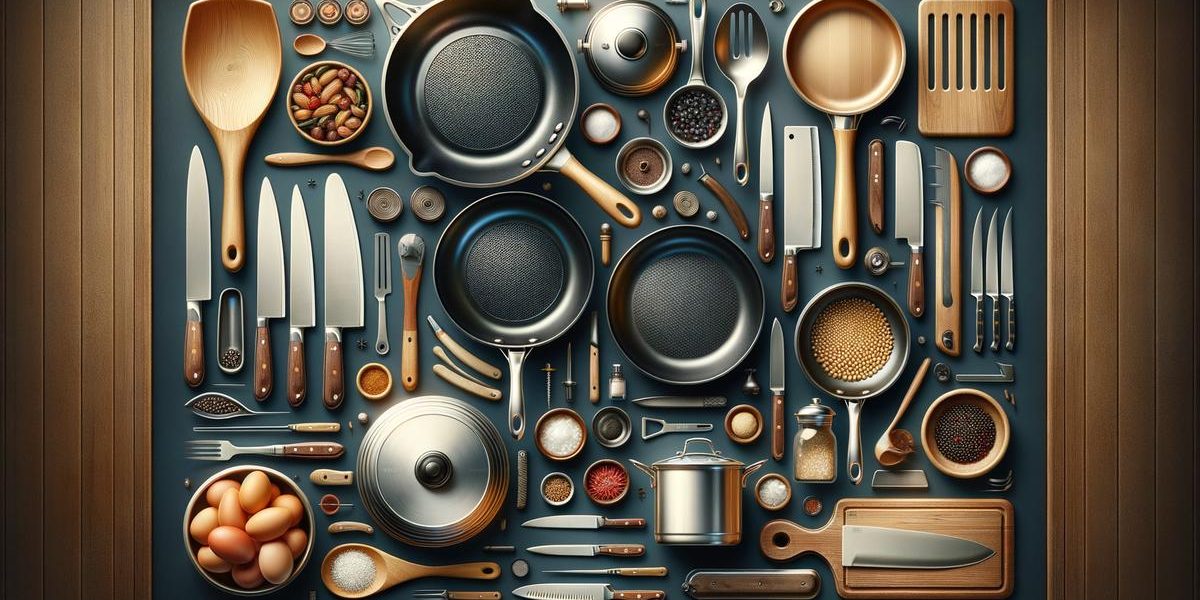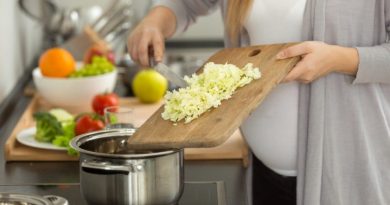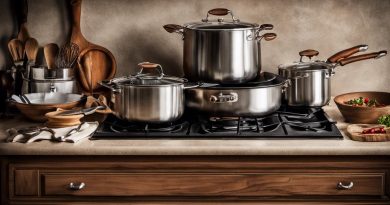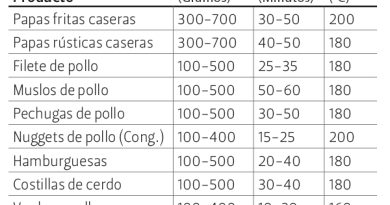Equip your Kitchen like a Professional Chef
Equipping a kitchen with the right tools is a fundamental step for any chef or culinary enthusiast aspiring to create exceptional dishes. The careful selection of utensils not only reflects a commitment to quality and precision in every recipe but also facilitates the creative process in the kitchen. This article provides a detailed guide on how to choose essential items, from pans to knives and measuring utensils, ensuring that each preparation culminates in success.
Selection of Pans
A good pan, a fundamental part of a chef’s kitchen equipment, must meet certain indispensable characteristics to guarantee the quality of the prepared food, efficiency, and comfort during the cooking process. The key features that every ideal pan for chefs should have are:
- High-Quality Materials: A pan intended for professional use in the kitchen should be made of high-quality materials such as ceramic, stainless steel, or advanced non-stick materials like titanium or PFOA-free Teflon. These materials ensure even heat distribution, durability against frequent use, and easier cleaning.
- Good Thermal Conductivity: It is vital that the pan has excellent thermal conductivity, meaning it can heat up quickly and evenly. This ensures precise cooking and allows food to cook evenly across its surface. Aluminum, for example, is very effective for this, but it is often coated with other materials to improve its durability and non-stick properties.
- Durability: The pan must withstand constant use and the various cooking techniques that the chef may apply, including scratch resistance, tolerance to different temperature ranges, and the ability to be used on different types of stoves, including induction stoves.
- Functional Design: The design of the pan is also crucial. It should have a heat-resistant and ergonomic handle, which facilitates handling during cooking. Additionally, the edge of the pan should preferably be slightly inclined to allow for efficient flipping of food.
- Appropriate Size and Weight: The size and weight are essential depending on the type of food being prepared; a pan that is too heavy could be difficult to handle, while one that is too light may not hold heat well. There should be a balanced proportion between the bottom and the walls of the pan to facilitate proper cooking.
Selecting the appropriate pan is an essential step for every chef striving for excellence in their culinary creations. Considering these characteristics simplifies the choice in the search for the ideal utensil, capable of meeting the demands of professional cooking.

Essential Kitchen Knives
Choosing essential kitchen knives is crucial for any culinary enthusiast, as with these tools, we can chop, slice, fillet, and much more. The important thing is to know which ones are indispensable and how to choose them correctly. We don’t need to clutter ourselves with knives that we won’t use; let’s focus on the high-quality basics that we really need.
The basic knives that every kitchen should have are:
- The chef’s knife or cook’s knife: A good chef’s knife should have a blade length between 15 to 20 cm, allowing for both long and precise cuts. The handle should be comfortable to prevent fatigue during prolonged use. According to a study, the chef’s knife is used in approximately 80% of all cutting tasks in the kitchen.
- The paring knife or peeler: With a blade length of about 7 to 10 cm, it is perfect for meticulous tasks such as peeling fruits and vegetables or making small or decorative cuts. It should be lightweight and manageable.
- The bread knife: Its serrated blade allows for cutting through bread without crushing it, maintaining the integrity of the sliced piece. Not only useful for bread, this knife performs equally well with tomatoes and any food with a hard surface and a soft interior.
Choosing a knife boils down not only to function but also to material and construction quality. Always opt for high-quality stainless steel, as it ensures longevity and ease of maintenance. The way the knife balances in your hand is also crucial; it should feel like an extension of your arm.
A good set of knives not only makes our work in the kitchen more efficient but also safer. Choosing wisely and keeping them well sharpened will make your culinary tasks more enjoyable. With these basic knives and following these tips, you’ll be well-equipped to tackle any recipe you decide to try.
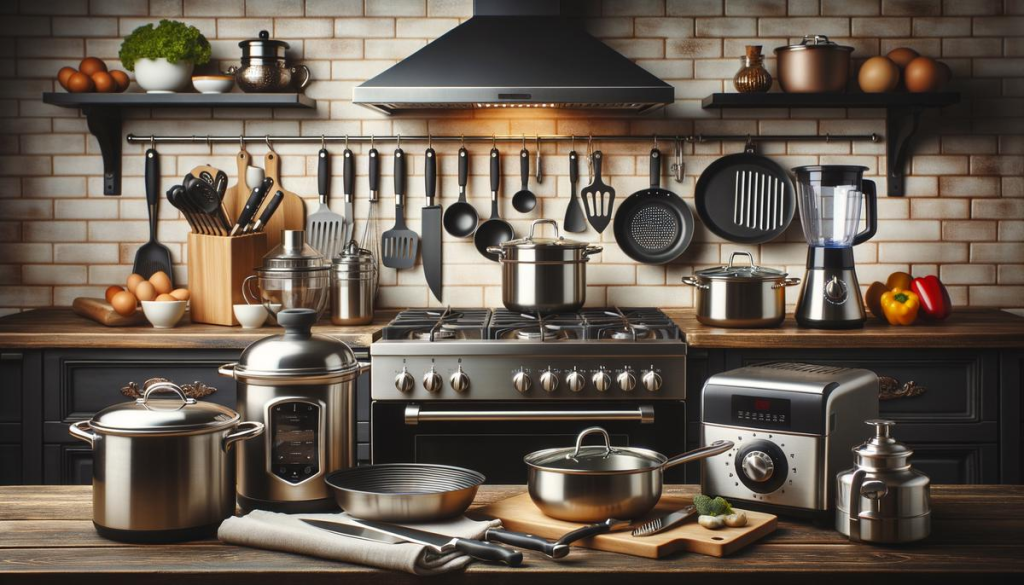
Basic Cooking Utensils
Measuring utensils are essential for equipping your kitchen like a professional. Precision is key when following recipes that require exact quantities of ingredients. That’s why some indispensable elements in your cooking utensils set are:
- Measuring Spoons and Cups: Make sure they include measurements in both milliliters (ml) and grams (g) and ounces (oz) for added versatility. Durable and easy-to-clean materials, such as stainless steel, clearly marked to avoid confusion, will significantly enhance your culinary experience.
- Kitchen Scale: Many recipes, especially in baking and pastry, require precision to the milligram. Digital scales offer this precision, in addition to working with different units of measurement and featuring additional functions such as tare, allowing you to weigh ingredients consecutively without removing those already on the scale. In a study, it was found that measurement by scale was more accurate than volume measurement in 99% of cases.
- Cutting Boards: I recommend having at least two: one for meat and another for vegetables and fruits, thus avoiding cross-contamination of food. Wooden boards are excellent for their natural antibacterial properties, but plastic ones are also a good option due to their ease of cleaning and durability. Make sure they are large enough to handle food safely and comfortably.
- Pans and Pots: To achieve professional results, it is crucial to have pans of different sizes, including a sauté pan with high edges that allows for effective sautéing without spills, and pots for prolonged cooking that ensure even heat distribution. Look for those with non-stick coating to facilitate cooking and cleaning, but also consider having at least one cast iron skillet. The latter is incomparable for searing meats and withstanding high oven temperatures.
- Baking Molds: Having a variety of baking molds and trays is necessary. Silicone molds work well for easy unmolding, while metal ones retain heat better, ideal for roasts and crispy breads.
.
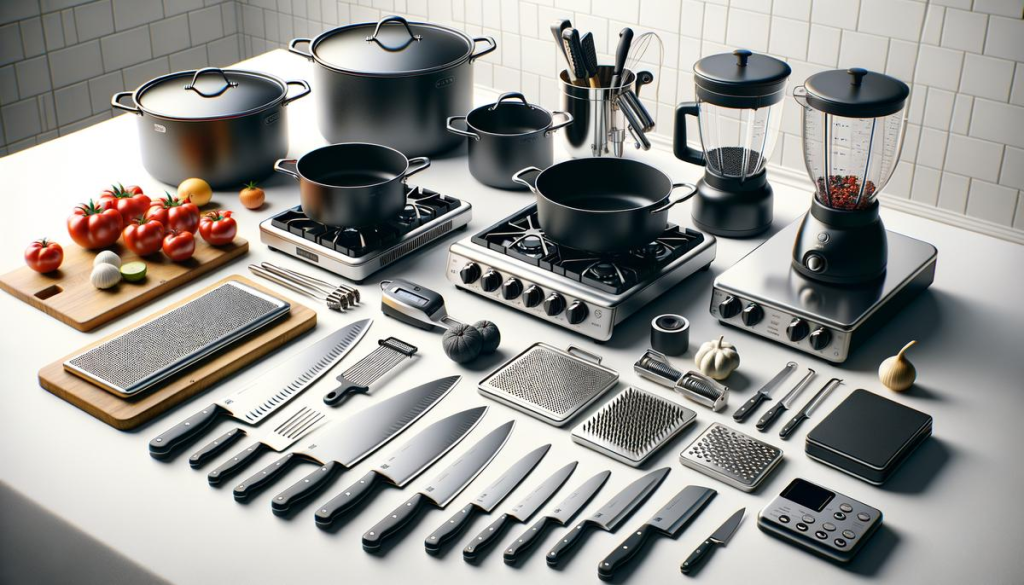
The meticulous selection of each piece of kitchen equipment is more than just a simple decision; it is an investment in our passion for gastronomy and a commitment to culinary excellence. Every pan, knife, and carefully selected utensil brings us one step closer to memorable dishes that delight the senses. Equipping our kitchen with the right tools empowers us to explore new recipes, refine techniques, and share our love for food with others. This conscious act of selection becomes the foundation upon which we build our most cherished culinary experiences.

